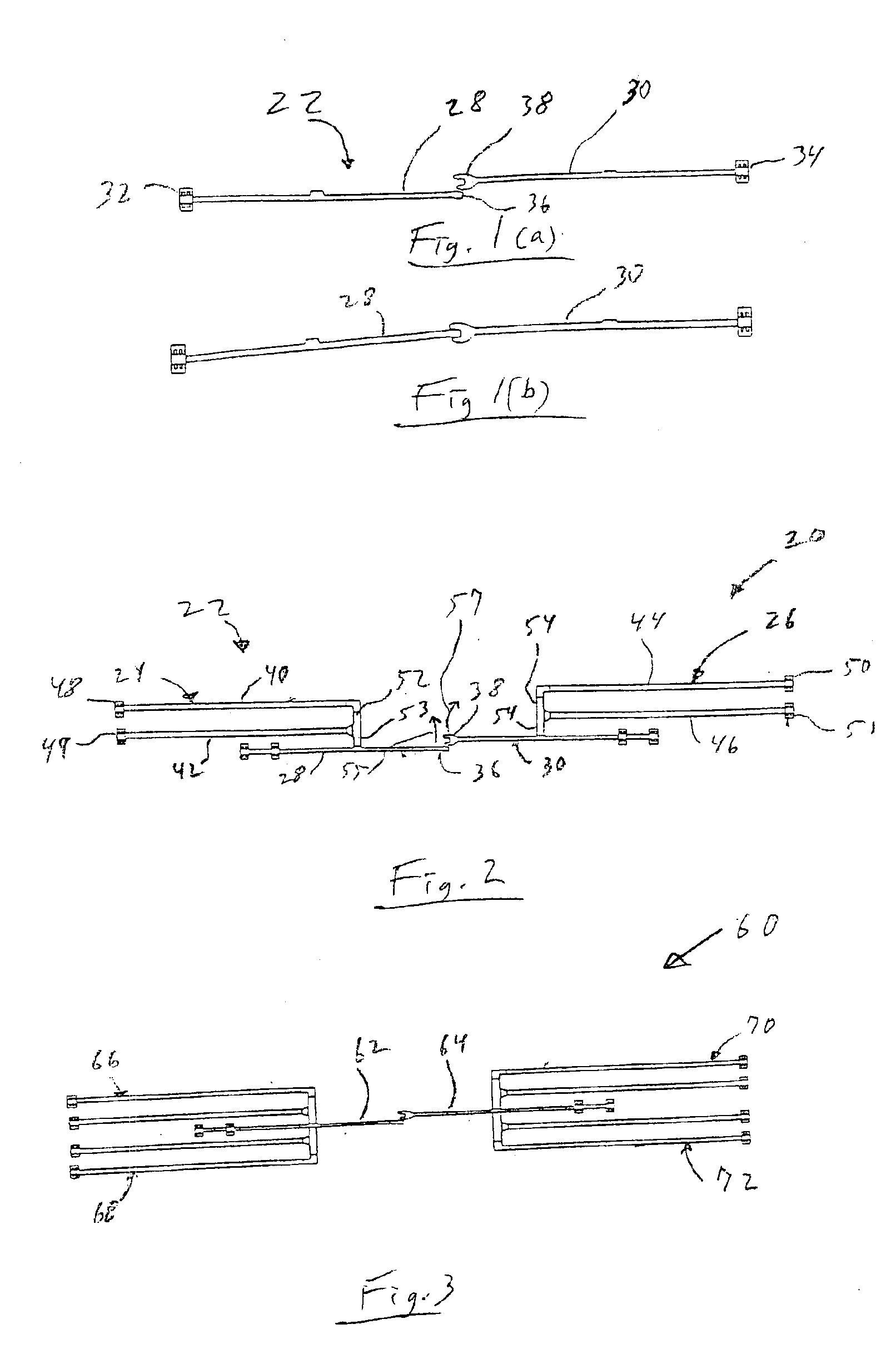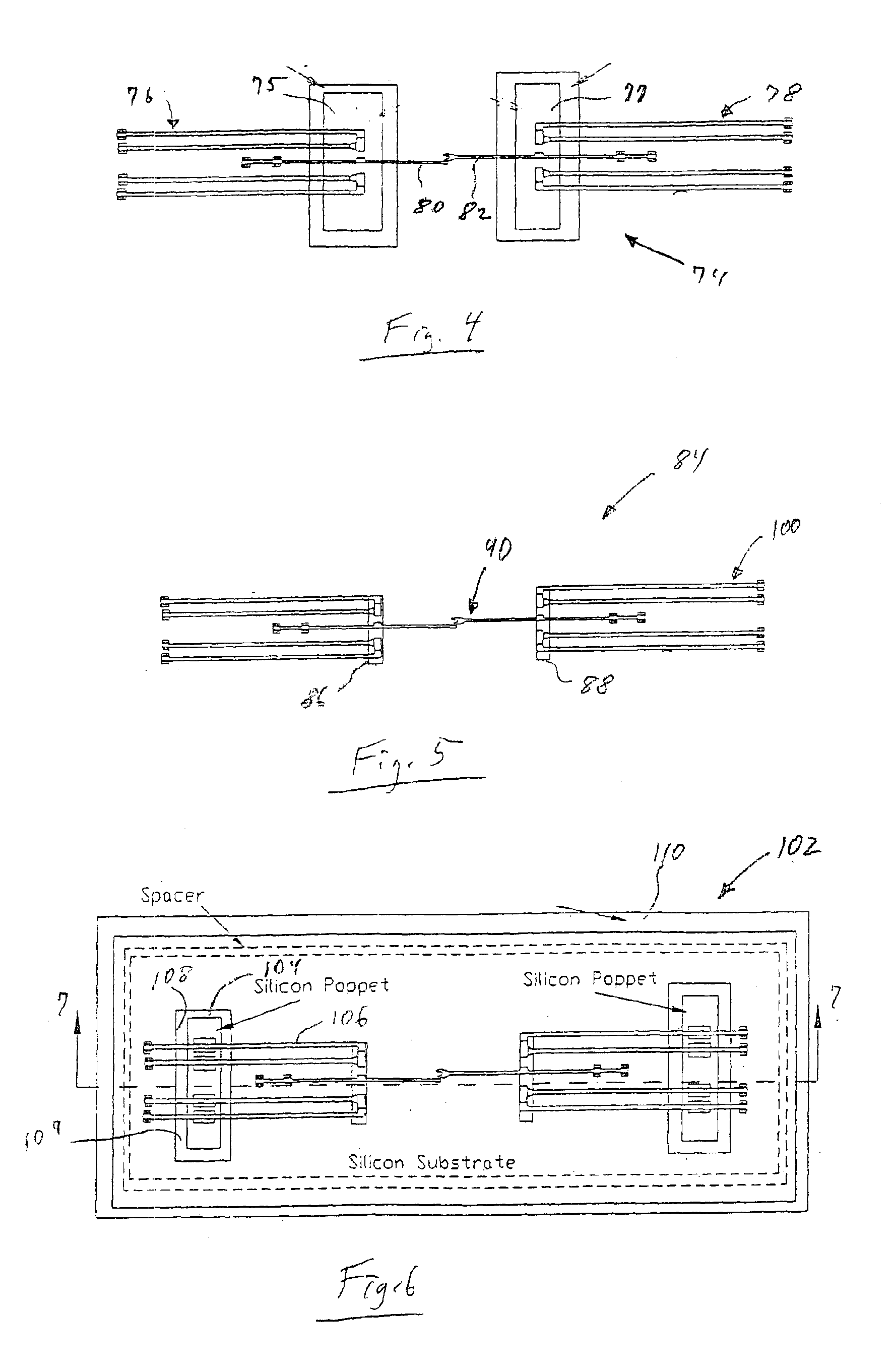Thin film shape memory alloy actuated microrelay
a micro-relay and memory alloy technology, applied in relays, generators/motors, contact mechanisms, etc., can solve the problems of power consumption and difficulty in small-scale manufacturing, and achieve the effect of relatively large current, low manufacturing cost and low cos
- Summary
- Abstract
- Description
- Claims
- Application Information
AI Technical Summary
Benefits of technology
Problems solved by technology
Method used
Image
Examples
Embodiment Construction
[0032]In its general concept, the invention comprises a thin film device 20 in which microrelay 22 of FIGS. 1(a) and 1(b) is in combination with shape memory alloy (SMA) actuators 24 and 26 of FIG. 2. The microrelay / actuator device 20 achieves the advantages of high work output per unit mass, small size, rapid actuation, higher efficiency than differential thermal expansion, good impedance match (operates at TTL level voltages), purely resistive impedance (no magnetic coil), and which can be fabricated using MEMS technology.
[0033]In the invention microfabrication techniques used for the fabrication of microelectro-mechanical systems (MEMS) coupled with sputter deposited thin film SMA actuation technology enable the mass production of device arrays with high current carrying microrelays. The SMA material can be made in thin film configurations in accordance with the teachings of U.S. Pat. No. 5,061,914 to Busch et. al. for Shape Memory Alloy Microactuator, the disclosure of which is ...
PUM
 Login to View More
Login to View More Abstract
Description
Claims
Application Information
 Login to View More
Login to View More - R&D
- Intellectual Property
- Life Sciences
- Materials
- Tech Scout
- Unparalleled Data Quality
- Higher Quality Content
- 60% Fewer Hallucinations
Browse by: Latest US Patents, China's latest patents, Technical Efficacy Thesaurus, Application Domain, Technology Topic, Popular Technical Reports.
© 2025 PatSnap. All rights reserved.Legal|Privacy policy|Modern Slavery Act Transparency Statement|Sitemap|About US| Contact US: help@patsnap.com



